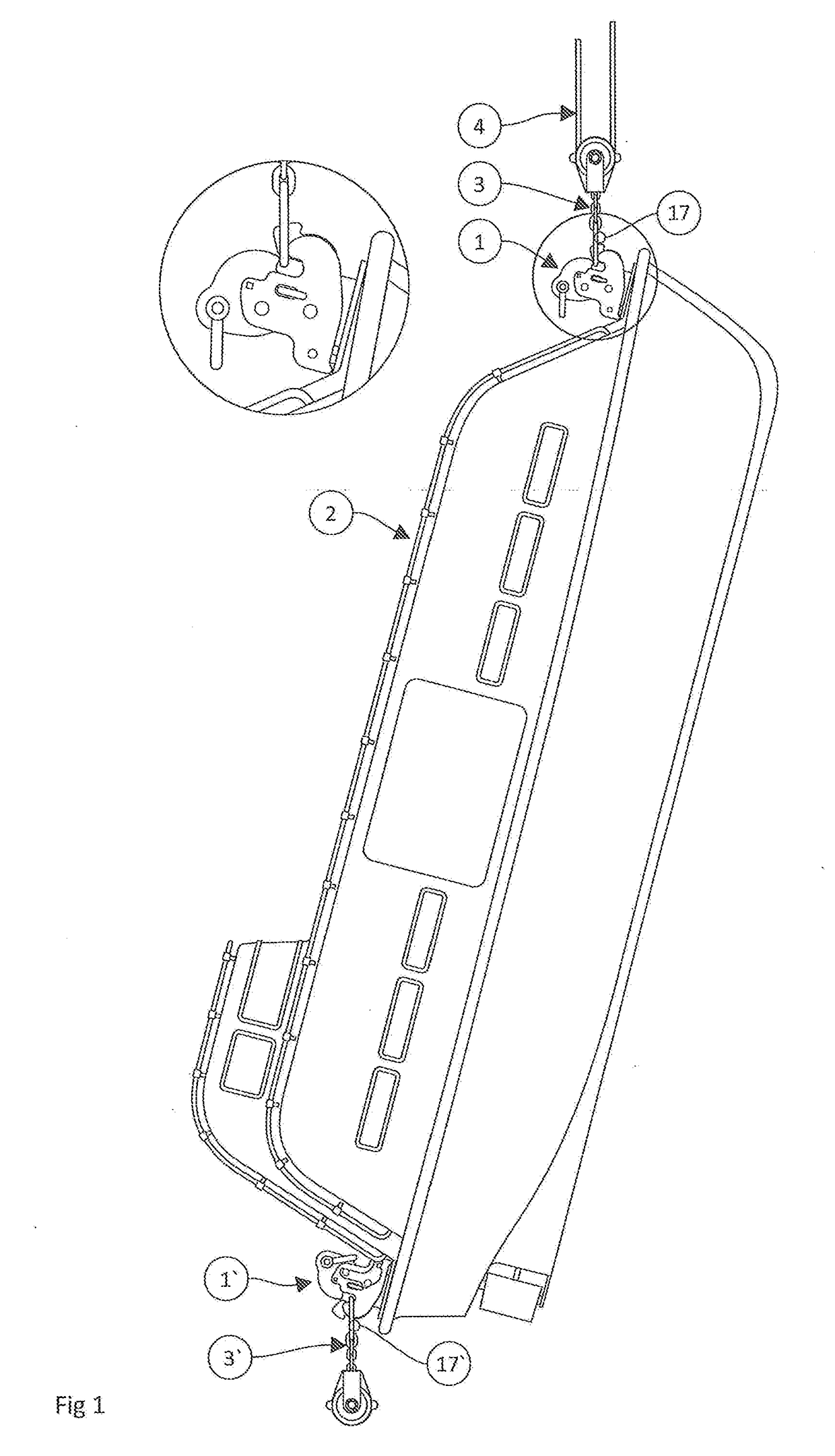Lifeboat release and retrieval system (LRRS)
a technology of lifeboats and retrieval systems, applied in the field of coupling, can solve the problems of difficult to release loaded hooks
- Summary
- Abstract
- Description
- Claims
- Application Information
AI Technical Summary
Benefits of technology
Problems solved by technology
Method used
Image
Examples
Embodiment Construction
[0088]The term upper and lower in the description must be interpreted in the broadest sense and is defined in view of the orientation of the parts in the appended drawings. These parts could have other orientations than defined when the invention is in use.
[0089]The main axis of the hook-arrangement is defined as a line extending from the first part of the hook-shaped beak 5a to the second part of the hook shaped beak 5b. This line is perpendicular to the lifeboat deck 14. In FIG. 2 this is a substantially vertical line
[0090]FIG. 1 shows a lifeboat 2 suspended from a loop or chain link 17 attached to a lowering arrangement or fall, such as a davit and a tackle 4. One end of the tackle 4 is attached to a ship, platform or other devices that requires a lifeboat 2. At the other end there is arranged a chain assembly 3 with a loop, such as a chain link 17 at the free end. A wire or other arrangement suitable for securing the lifeboat 2 to the tackle 4 is also possible suspension arrange...
PUM
 Login to View More
Login to View More Abstract
Description
Claims
Application Information
 Login to View More
Login to View More - R&D
- Intellectual Property
- Life Sciences
- Materials
- Tech Scout
- Unparalleled Data Quality
- Higher Quality Content
- 60% Fewer Hallucinations
Browse by: Latest US Patents, China's latest patents, Technical Efficacy Thesaurus, Application Domain, Technology Topic, Popular Technical Reports.
© 2025 PatSnap. All rights reserved.Legal|Privacy policy|Modern Slavery Act Transparency Statement|Sitemap|About US| Contact US: help@patsnap.com



